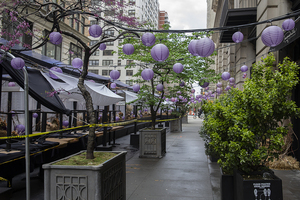How the Restaurant Industry (and its Risks) Are Changing

People need to eat, so the restaurant industry isn’t in much danger of extinction. That doesn’t mean it won’t evolve. Many factors – including new technology, changing social norms and the pandemic – are forcing restaurants to adapt. It’s survival of the fittest.
Staffing Shortages Have Skyrocketed
When the pandemic struck, many restaurants closed their doors. Now that they’re trying to reopen, they’re facing an unexpected problem. Workers don’t want to return.
The so-called Great Resignation that started around April, and The Atlantic says that it is now accelerating. The restaurant industry has been hit especially hard. In August, nearly 7% of employees in the accommodations and food services sector quit. The National Restaurant Association says that three in four operators cite recruitment and retention as their toughest challenge.
Workers Are Demanding Better Pay and Conditions
The Great Resignation has many causes, but The Guardian says that low wages and poor working conditions are keeping labor shortages in the food industry going. Workers are demanding better pay. At the same time, Business Insider says that tips have gotten worse during the pandemic. That means that there’s even more pressure of employers to increase compensation. The New York Times says that many restaurants have responded with higher wages and even signing bonuses.
But appeasing workers will be difficult. According to Eater, a strike involving workers at a juice chain forced nine locations to close temporarily, and Total Food Service says that thousands of McDonald’s workers participated in a one-day strike to fight for a $15 minimum wage. Even before the pandemic, Modern Restaurant Management said that wage and hour disputes were on the rise, and The Guardian warns that more strikes could be coming.
Everything Is More Expensive
Labor isn’t the only thing that’s gone up in price. Inflation reached 5.4% in September, and MarketWatch says high inflation rates will probably continue well into 2022.
According to the 2021 State of the Restaurant Industry Mid-Year Update from the National Restaurant Association, menu prices have had to increase to keep up with hikes in food, labor and fuel costs. But restaurant owners may worry that increasing prices too much could keep customers away, and the rising costs make it harder to stay profitable.
Delivery Is Now the Norm
McKinsey & Company says that food delivery has become a $150 billion market. The market has tripled since 2017 because of third-party delivery apps and, of course, the pandemic.
While delivery has provided a lifeline for restaurants, it’s not without risks. Foodborne illnesses can become more common if the delivery takes a while and the food isn’t insulated properly. Car crashes are another concern.
Automation Is Up
According to Crunchbase, staffing shortages have led to increased interest in restaurant automation. Fast Casual says the restaurant industry’s automation revolution has begun and provides a list of 10 robots being used now. These robots can prepare food, tend bar, collect plates and more.
Riots, Shootings and Workplace Violence Are More Common
Over the last decade, both violent and nonviolent demonstrations have increased. In fact, riots sparked by George Floyd’s death caused $1 billion to $2 billion in insured losses, according to Axios. The FBI reports that there were 40 active shooter incidents in 2020 alone. As a restaurant opening its doors to the public, your risk of experiencing a violent incident is increasing.
Is Your Coverage Keeping Up?
The restaurant industry is changing at a breakneck speed. Risks are changing, too, and that means insurance coverage needs to keep up.
If you haven’t reviewed your commercial insurance in a while, now is the time to do so. Contact BNC’s Commercial Insurance team to request a coverage review.







